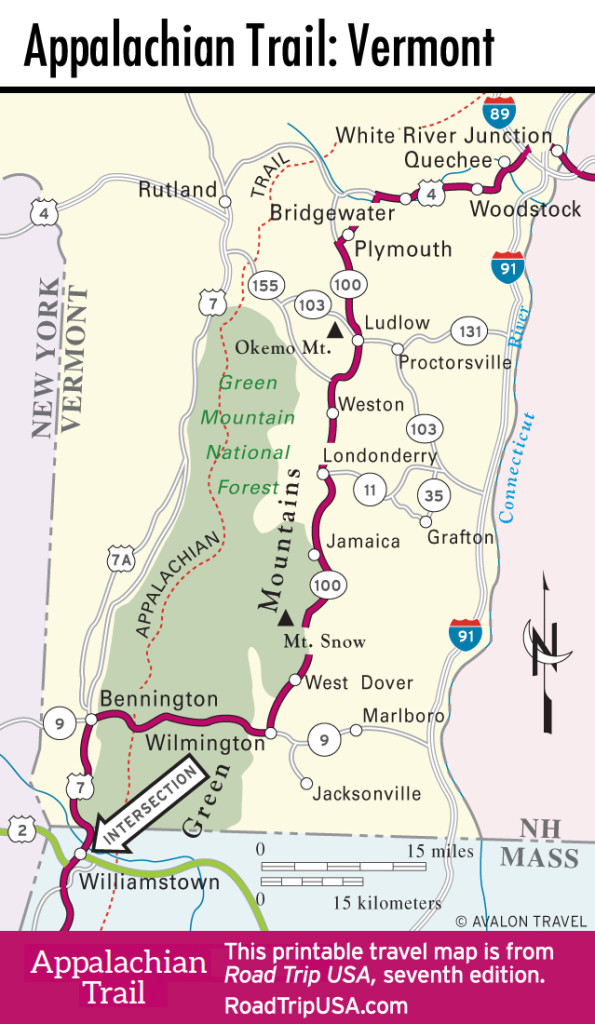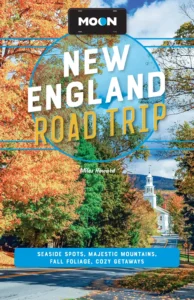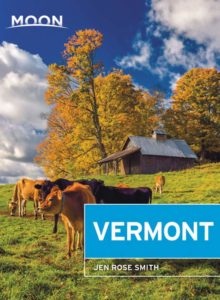Woodstock
“The good people of Woodstock have less incentive than others to yearn for heaven,” said a 19th-century resident. It’s a sentiment readily echoed today. Chartered in 1761, Woodstock (pop. 2,932) remains an exceedingly well-preserved example of small-town New England—tidy Federal-style homes, built by wealthy professionals of the newborn American republic, still ring the classic village green. Now the historic village is home to wealthy retirees and their fortunate sons and daughters. You’ll see the signs of this old money throughout the town: well-stocked wine racks at the general store, shady basketball courts along the river, excellent performing arts at the Town Hall Theatre, and, most importantly, the wherewithal to refuse any compromising commercial development. To put it mildly, expansion of the tax base is not a pressing issue for this community.
During summer and fall, walking tours are an excellent way to take stock of the town’s history and architecture. Call or visit the Woodstock Welcome Center (46 Mechanic St., 802/457-3456) for a schedule. Hiking trails lead up both the summits overlooking the town. A community blackboard at the corner of Central and Elm, a.k.a. the Town Crier, lists local events and activities all year. Even if you’re racing through Woodstock, bound for the mountains, be sure to stop long enough to enjoy this quick tour: From the oblong green, cross the Middle Covered Bridge and follow the Ottauquechee downstream along River Street. Then work your way back via Elm Street and F. H. Gillingham & Sons, Vermont’s oldest country store, which offers locally made food and crafts.
If you’ve admired the rolling fields and weathered wooden fences, savored the local apples and sharp cheddar, and enjoyed the scent of mown hay or boiling maple sap, you’ll appreciate an even closer look at New England’s farms with a visit to the Billings Farm & Museum (802/457-2355, daily Apr.-Oct., Sat.-Sun. Nov.-Mar., $16), just off Route 12 north of the village. Frederick Billings, better known as the builder of the Northern Pacific Railroad (Billings, Montana, is named for him), began this working dairy farm in the late-19th century. Its restored farmhouse and huge barns illustrate rural life in galleries, demonstrations, and hands-on activities.
Across the road, another historic farm is open to the public as the Marsh-Billings-Rockefeller National Historical Park (802/457-3368, tours daily Memorial Day-late Oct., $8 adults), Vermont’s only national park. The property, which includes the former home of Laurance Rockefeller (1910-2004), who married Frederick Billings’s granddaughter, is a study in conservation practice, and its dense woodlands are living proof of the merits of sustainable agriculture. Some 28 mi (45 km) of trails are open in the winter for cross-country skiing and snowshoeing from the Nordic center at The Woodstock Inn & Resort (802/457-6674, $25).
Where to Eat and Stay in Woodstock
Hungry travelers will find plenty of choices around town. There are also two interesting if rather bare-bones road-food haunts bookending the town along US-4. On US-4 one mile west of the green is the Woodstock Farmer’s Market (802/457-3658), with top-quality produce and deli fare.
Accommodations run the gamut from moderate motels to deluxe inns; at all of them, expect rates to increase during high season, which in Woodstock is most of summer and fall, along with the winter holidays. The main place right in town, the 142-room Rockefeller-built Woodstock Inn & Resort (888/338-2745, $189 and up) sits on the south side of the green, and although it tries hard to look like a stately old place, the inn was actually built from scratch in 1969. The Village Inn of Woodstock (41 Pleasant St., 802/457-1255, $169 and up), a lovely Victorian-era B&B, has much more character, yet is still affordable. The modest Braeside Motel (908 E. Woodstock Rd., 802/457-1366, $128 and up), along US-4 on the eastern outskirts of town, is about as budget-friendly as you’re going to get.
Vermont Travel Map
















